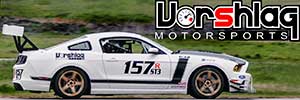Fabman
Dances with Racecars
- 6,553
- 8,204
- Exp. Type
- W2W Racing
- Exp. Level
- 20+ Years
This is when you move the watts up...My car understeered like a pig with no rear sway bar on the cortex setup. It was potentially faster and easier to drive, but was no fun whatsoever. I could see no rear sway bar working in a car with coyote power, but with only 290whp I couldn't throttle steer the car how I wanted.

















